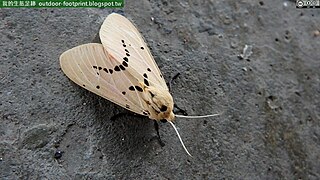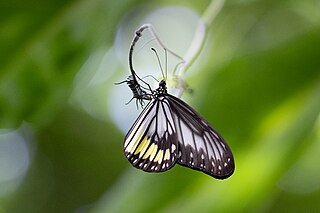
Jamides, commonly called ceruleans, is a genus of butterflies in the family Lycaenidae. The species of this genus are found in the Indomalayan realm, the Palearctic realm and the Australasian realm.

Delias is a genus of butterflies. There are about 250 species of the genus Delias, found in South Asia and Australia. The genus is considered to have its evolutionary origins in the Australian region.

James John Joicey FES was an English amateur entomologist, who assembled an extensive collection of Lepidoptera in his private research museum, called the Hill Museum, in Witley, Surrey. His collection, 40 years in the making, was considered to have been the second largest in the world held privately and to have numbered over 1.5 million specimens. Joicey was a fellow of the Zoological Society of London, the Royal Geographical Society, the Royal Entomological Society, the Royal Horticultural Society, and the Linnean Society of London.

Danis is a genus of butterflies in the family Lycaenidae. The species of this genus are found in the Australasian realm.

George Talbot FES was an English entomologist who specialised in butterflies. He wrote about 150 scientific papers, the majority being primarily systematic, consisting of the description of new species or the revision of various genera. He was also responsible for the curation and preservation of the Joicey collection of Lepidoptera prior to its accession by the Natural History Museum.

Tellervini is a tribe of danaid butterflies with only the one genus Tellervo, with six widely distributed species found in the Australasian realm and the Indomalayan realm. The taxon is apparently monophyletic, but its relationship with the other two danaid tribes is yet uncertain. The phylogeography of the group is also a challenge to those who hold to a Cenozoic origin of the butterflies.

Melese is a genus of moths in the family Erebidae. The genus was erected by Francis Walker in 1854.

Spilarctia is a genus of moths in the family Erebidae. The genus was erected by Arthur Gardiner Butler in 1875.

Trichromia is a genus of moths in the family Erebidae erected by Jacob Hübner in 1819. The members of this genus are largely indigenous to South America.

Mimene is an Australasian genus of grass skippers in the family Hesperiidae.

Ideopsis vitrea, the Blanchard's wood nymph, is a butterfly of the family Nymphalidae. It is found on Sulawesi, the Moluccas and New Guinea.
Charaxes lemosi is a butterfly in the family Nymphalidae. The species was described by James John Joicey and George Talbot in 1927. It is found on the island of Príncipe. The habitat consists of forests.

Morphopsis is a genus of butterflies endemic to New Guinea.
Araeomolis haematoneura is a moth of the family Erebidae. It was described by entomologists James John Joicey and George Talbot in 1916. It is found in Colombia. The type material was collected in September 1909 near San Juan on the Chocoan slopes at an altitude of 4,600 feet (1,400 m).
Spilarctia holobrunnea is a moth in the family Erebidae. It was described by James John Joicey and George Talbot in 1916. It is found on New Guinea, where it has been recorded from the Arfak Mountains in Papua. It is probably also present in Papua New Guinea.
Spilarctia rubribasis is a moth in the family Erebidae. It was described by James John Joicey and George Talbot in 1916. It is found on New Guinea, where it has been recorded from the Arfak Mountains, Kobowre Mountains and the Jayawijaya Mountains in Papua.
Spilarctia ruficosta is a moth in the family Erebidae. It was described by James John Joicey and George Talbot in 1916. It is found on New Guinea. It is endemic to the Arfak Mountains in Papua.

Delias dice is a butterfly in the family Pieridae. It was described by Samuel Constantinus Snellen van Vollenhoven in 1865. It is endemic to New Guinea in the Australasian realm.

Delias enniana is a butterfly in the family Pieridae. It was described by Charles Oberthür in 1880. It is found in New Guinea.














